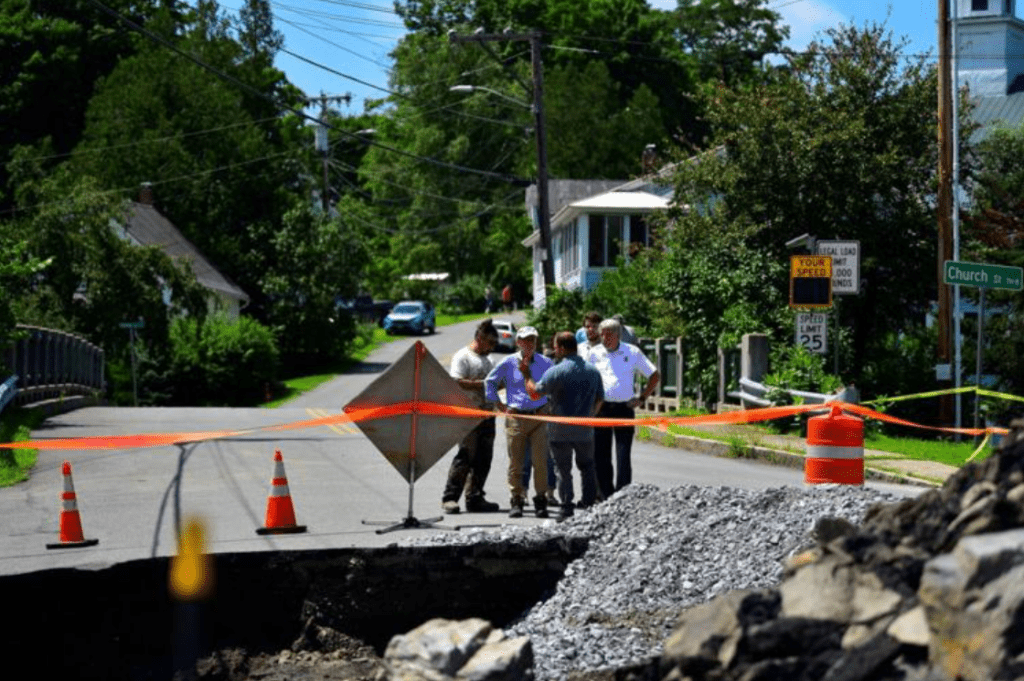
(Photo by Robert Blechl)
BARNET VILLAGE — On Tuesday, as part of his flood damage tour to Vermont communities ravaged by last week’s rains, U.S. Peter Welch, D-VT, visited Barnet Village, where he proposed reforms to FEMA.
Beyond the Federal Emergency Management Administration reimbursement to communities, Welch said the increasing number of disasters and floods require changes at FEMA and the allocation of more resources to the local communities that best know how to use them.
A group that included state Sen. Jane Kitchel, D-Danville, Select Board member Dylan Ford, fire chief Ronald Morse, and town officials, and residents met Welch at noon at the Church Street Meeting House, after which they surveyed the massive crater created by floodwaters at Route 5 in front of the post office.
Welch noted that on Sunday, he was in Plainfield and Barre on the anniversary of the major floods that hit Vermont one year ago.
He called meeting the same family that was flooded twice “heartbreaking.”
“We all know this incredible change in our weather,” said Welch. “What’s the cause? We know what it is. And now it’s happening more. These 100-year events are happening every year or every other year.”
He said that flooding events can be isolated, and no one knows where they will be concentrated in a given year.
He lauded FEMA for its fast response immediately following disasters.
“My experience with folks who have been on the receiving end of a storm is that in the immediate aftermath, it works pretty good,” said Welch. “They show up with aid, water, food, supplies, temporary shelter, things that are absolutely essential in the aftermath, and they do a great job. But then, with what’s going on around the country, they get called to the next disaster. They’re in Vermont today, a fire in Hawaii tomorrow, a flood in Houston on Wednesday. It is incredibly demanding what’s required of FEMA with the escalation of both the number and the magnitude of storms.”
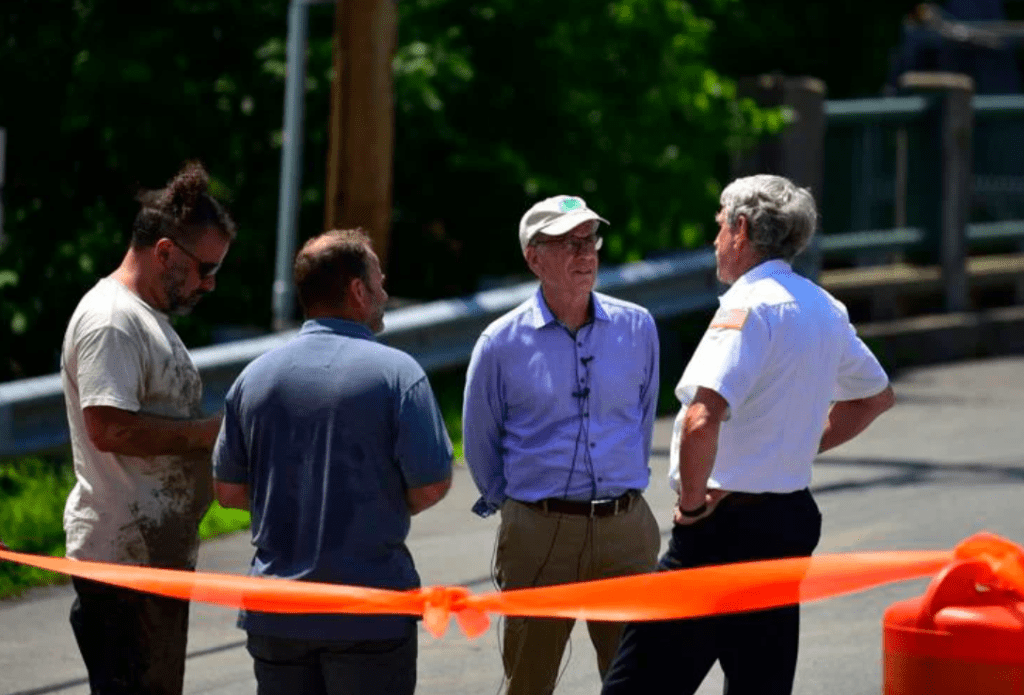
(Photo by Robert Blechl)
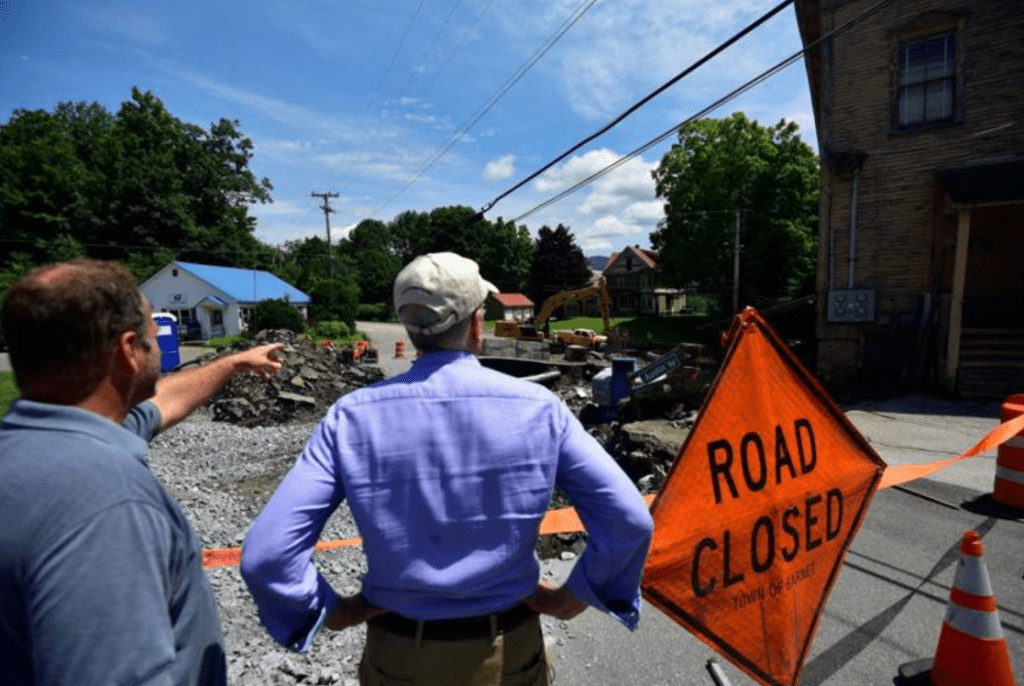
While the immediate aftermath with FEMA can be effective, he said the longer-term response, including bridge and infrastructure repairs, can be better.
“What I’ve concluded is we really have to change the model,” said Welch.
In the long term, more authority, money and resources need to be given to local communities so they can make decisions about how to deliver aid because local leaders are accountable, completely invested in their community, know who has the expertise to complete a job, and know how to complete the work efficiently, he said.
Currently, for every $2 spent on FEMA administration, $1 goes to aid, said Welch.
“I do believe we have to take advantage of the fact that there is local leadership that is totally invested in that community, in the decisions about how best to repair, in the recovery,” he said.
Another challenge with FEMA is that a change in emergency response coordinators or administrators can result in a new person who might have a different interpretation of FEMA rules, said Welch.
He said while he and some of his Senate colleagues might not agree on many things politically, they agree that there needs to be more local control in recovering from a disaster.
“My hope is that we’ll be able to make some reforms on the long-term part of the FEMA recovery process,” said Welch.
Locally, communities can take “practical, common sense steps to alleviate the flooding threat,” he said.
He cited Ludlow, Vt., where voters opted to keep several dams that were no longer being used, against the recommendation of the Ludlow Select Board.
Then came the July 2023 floods, which devastated the town.
“The Select Board recommended they be removed, and it turns out the Select Board was right on that,” said Welch. “Because had they been removed, the water would have been allowed to spread out. You wouldn’t have had as much concentration and a rush of water that causes so much damage. These are case-by-case situations and decisions.”
Ford spoke of Barnet’s experience with flooding and suggested it could be improved with fewer state and permitting requirements.
“As a town, we’ve followed every recommendation that anyone has given us,” she said to Welch. “We have stone-lined all our ditches, we have doubled up on the size of our culverts. Every time there’s a mandate that comes down, we satisfy it. And yet we watch our town and our water patterns have not changed. The water patterns are following the 1927 water pattern.”
Referring to the new crater in front of the post office, she said, “That was the 1927 flood down there.”
“We’ve actually upped the culvert by double what they required of us a few years ago,” said Ford. “It did nothing. It’s actually worse.”
One thing that stands out is perhaps the town is “following an antiquated hydrology report,” especially in the era of climate change and when disasters can happen annually, even when following all the rules, she said.
Also attending Tuesday’s gathering were members of the Lake Harvey Association, who have been advocating for alterations to that dam for two decades and emphasizing the need to the state, she said.
“We can’t make headway with anyone, there’s too much permitting, there’s too many cooks, so speak, in the kitchen at the state level,” said Ford.
Last week’s flood heavily damaged Harvey’s Lake beach, which is a big part of the tax base. She said the beach will likely not reopen this year.
Currently, there is no access to Town Forest Road, which is where the town pit is located, because the state prevented the town from erecting a temporary bridge in a state of emergency, said Ford.
“We have unbelievable destruction on a few roads,” she said. “A Class IV road is just gone.”
In Barnet, Class IV roads are not maintained by the town, and property owners are made aware of that when building or buying a home.
“The thing about these small roads, we all teeter on the edge of survival,” she said.
If the current model continues, Ford said the only people who can afford to live in small towns are the wealthy who can pay the insurance.
“It will change the character of Vermont if the only people who can afford to live here have $100,000 to fix their road,” she said.
Another resident said last week’s flood brought down huge trees that created dams of their own that only exacerbated the problem.
Kitchel said a conversation needs to be had with other legislators about what has worked, what hasn’t worked and what the problems were, and what can be made better.
Kitchel said some things can be done at the federal level, but a lot of it will be at the state or local levels, be it dredging rivers to prevent flooding, removing trees, or addressing dam safety.
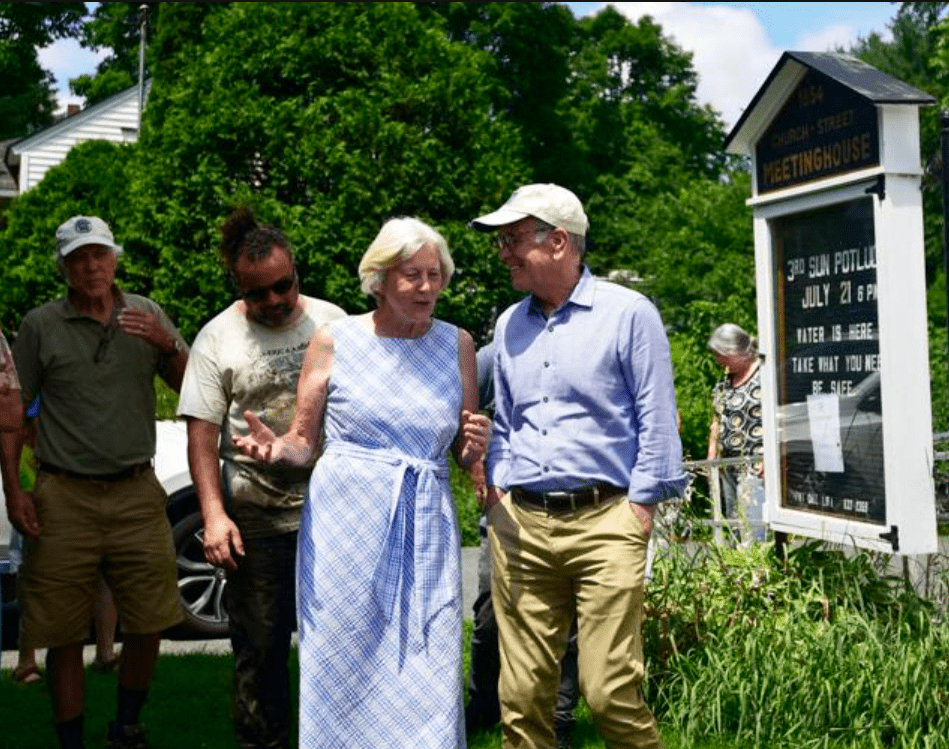
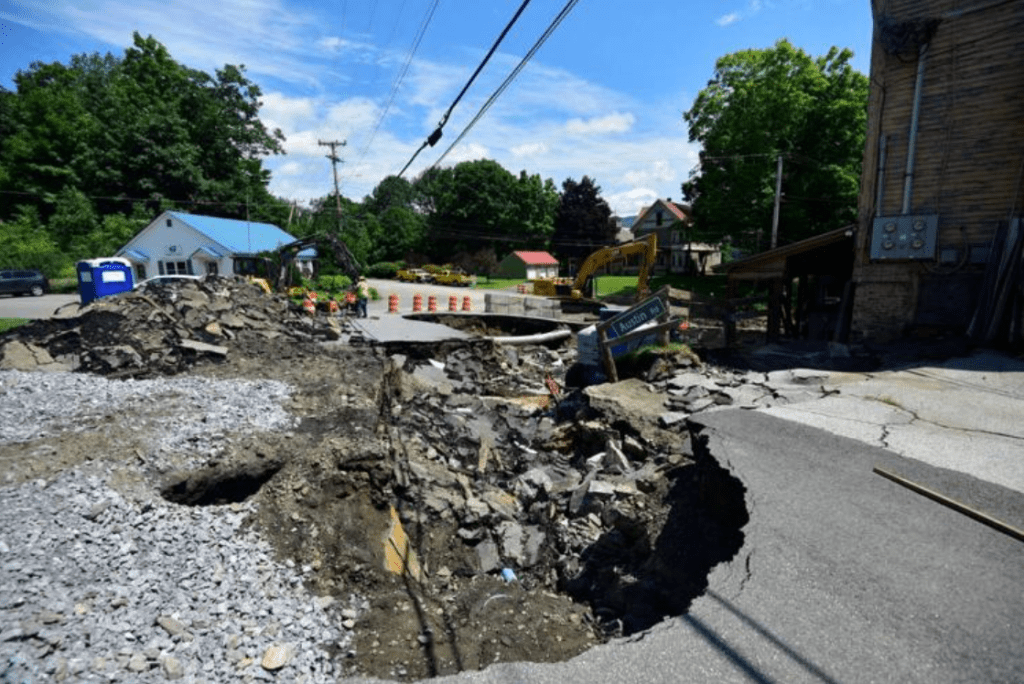
Prior to inspecting the flood damage in the village, those at Tuesday’s gathering gave a round of applause for Barnet fire personnel and first responders and all who helped last week’s effort.
After departing Barnet village, Welch visited Joe’s Brook Farm to survey the damage there, followed by a visit to Peacham at the South Peacham Store and meetings with residents who lost their homes.
After Peacham, he met with Lyndonville residents who were impacted by the flood.
Roads Reopen In Barnet
Last Thursday, more than a dozen roads were closed because of washouts, and some 200 residents on the municipal water system were without water after the water lines were destroyed.
On Tuesday, just two roads remained entirely closed (Town Forest Road and Rake Factory Road, the latter a Class IV) and the water system was operational again, albeit temporarily until permanent repairs are made.
Currently, residents on the system are under a boil water order.
“The roads are passable,” said Morse. “They’re not like they were pre-storm. Some may be one lane. Some may be a little rough.”
There’s no current timeline as to when the roads will be brought back to their normal state.
“They are putting the culverts in on Town Forest Road and they started today,” he said.
A total estimated cost of damage has not yet been calculated.
“The infrastructure damage and personal property damage is going to be astronomical,” said Morse.
Many residents had flooded basements and one family has a corner foundation that needs to be replaced before they can again stay at their home, he said.
“We have the state coming down to check out a couple of places today,” said Morse. “Every day another place pops up where people have concerns. For any property damage, no matter how minor, call 2-1-1 or go online to 211.org to file or register because that’s what’s going to drive the funding.”
He advised residents to stay safe out there and visit the Vermont fire safety website for flood safety information and cleanup tips.
A Barnet firefighter since 1980 and fire chief for more than three decades, last week’s floods from Hurricane Beryl were the worst that Morse has seen.
“I keep track of events like these,” he said. “I keep track of the river levels. The USDS has a river flow meter between Passumpsic and East Barnet. I keep an eye on that number, back to previous numbers, to see how things are going. This is the worst one, the highest in my 40-some years. It crested at about 21 feet. It rose something like 10 to 12 or 15 feet in five to seven hours. The flow rate was 16,300 cubic feet per second at crest.”

(Photo by Robert Blechl)
Story Link: Robert Blechl, Caledonian Record
